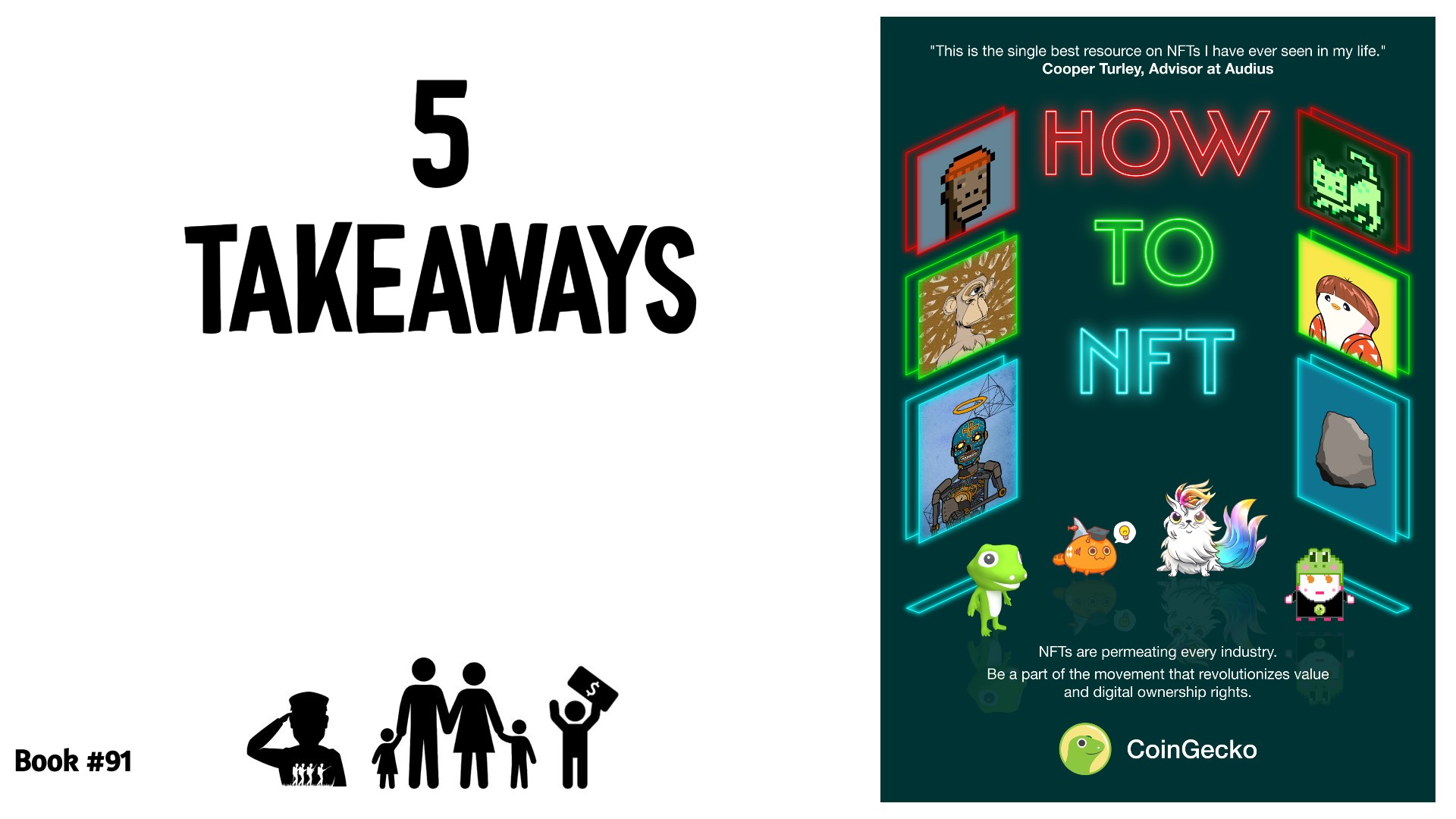“How to NFT” by CoinGecko, gives us a future-focused look at Non-Fungible Tokens (NFTs). NFTs are all the rage now because of the ability to sell simple pictures for millions of dollars.
But there is more under the hood of NFTs, as they can function in many different environments and situations. Some use-cases include art, music, collectibles, games, sports, metaverse, utility, and financial.
With so many use cases, NFTs are here to stay. After reading this book, I feel the market will become oversaturated. However, this isn’t necessarily a bad thing. NFTs, give creators the chance to “brand” their metadata onto the project.
With this immutable (cannot be changed) stamping, NFTs can provide “proof of original” vindication that is lacking today. Imagine you write a will that you make into an NFT. There is proof of the blockchain that this will is the most current and valid will in your possession. No one can challenge its authenticity. With that, let’s get into my five takeaways.
1) Collectibles are the largest market for NFTs by far. When people think of the NFT craze, they think of people drawing meme artwork selling for large amounts of money.
2) These collectible artworks are actually communities forming a community around the owners. It becomes an entry into a deeper world and sometimes allows early access to future projects.
3) Expect large corporations to use NFTs egregiously (they already are doing so). Everyone wants into the craze, and it creates hype for the company when they make or buy NFTs. I expect there to be a total onslaught of brand NFTs over the next couple of years.
4) Sports NFTs can become very popular. Instead of playing Fantasy football with a bunch of random numbers, you can own football player NFTs. Your cards can level up each week as you play more games. This will lead to more significant and more competitive battles between real-world players.
5) NFTs allow creators to earn “lifetime” royalties from future transfers (via sales) of their project. Before, an artist would create a picture and only receive payment for the initial sale. Now, they can settle royalty amounts for each subsequent deal. This allows more artists to develop NFTs to create passive income.
I found Lego NFTs to be the most exciting use of NFTs. With Lego NFTs, creators build a universe from the bottom. It’s almost like creating a sandbox game like Fortnite or Minecraft but not releasing the game.
You would release the tools and see what people can create. Lego NFTs act similar to a sandbox game. Creators can have something like a bunch of car types and colors. Then, they release these various colored cars to the NFT community.
The community would then build out a world around the cars by creating different forks for the projects. Some may make a world of workers who drive cars, and others can create worlds where the vehicles are the inhabitants.
Basically, it’s like creating a Pokemon game but only releasing the Pokemon images. The community can then decide on various worlds where the Pokemon inhabit, battle, have relationships, or families.
This type of originality will lend itself to large user-generated worlds and communities. It is exciting, and it is part of the larger NFT space. NFTs are much more than meme artworks and simple logos.
The communities that form around these projects are solid and vibrant. NFTs will be even more valuable in the metaverse, where everything is digital. Proof of creation and ownership is vital to have a trustworthy digital world. You don’t want someone to copy your digital couch or pet, do you?
If you are interested in the future of the digital age, then this is the book for you. It can also give you some ideas of becoming an NFT content creator. Creation is vital to success in the metaverse and beyond.

Leave a Reply